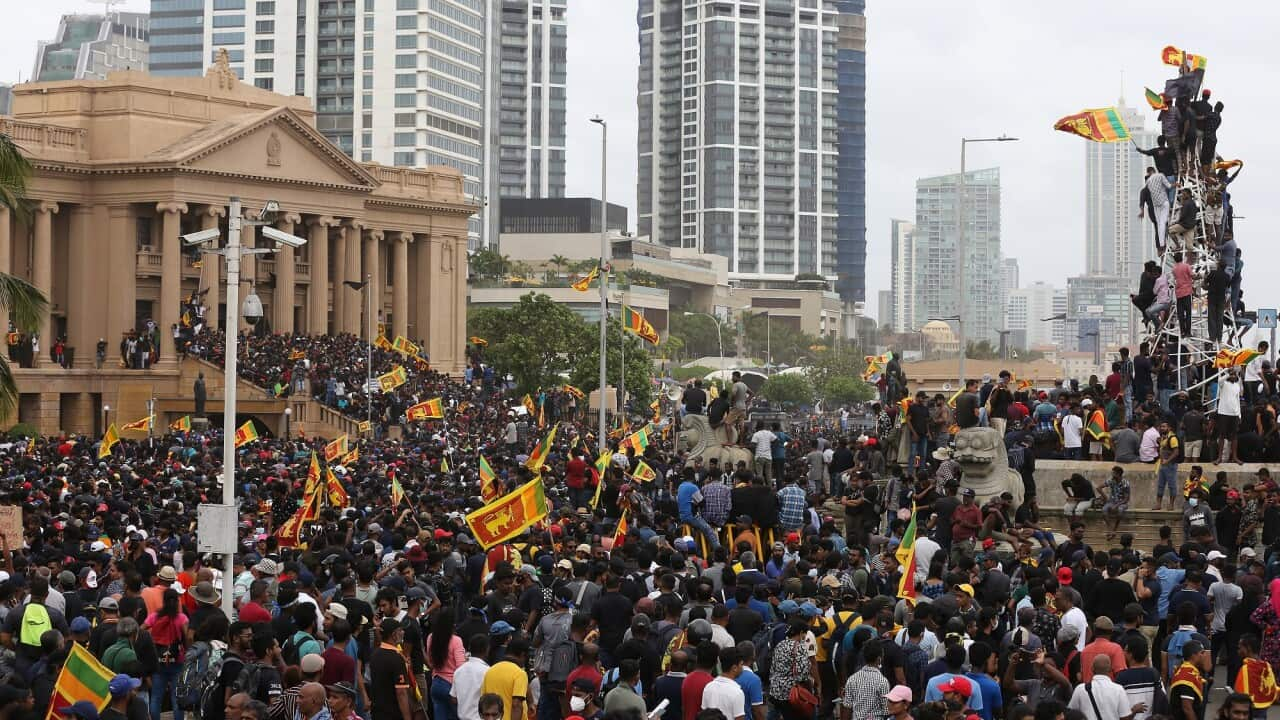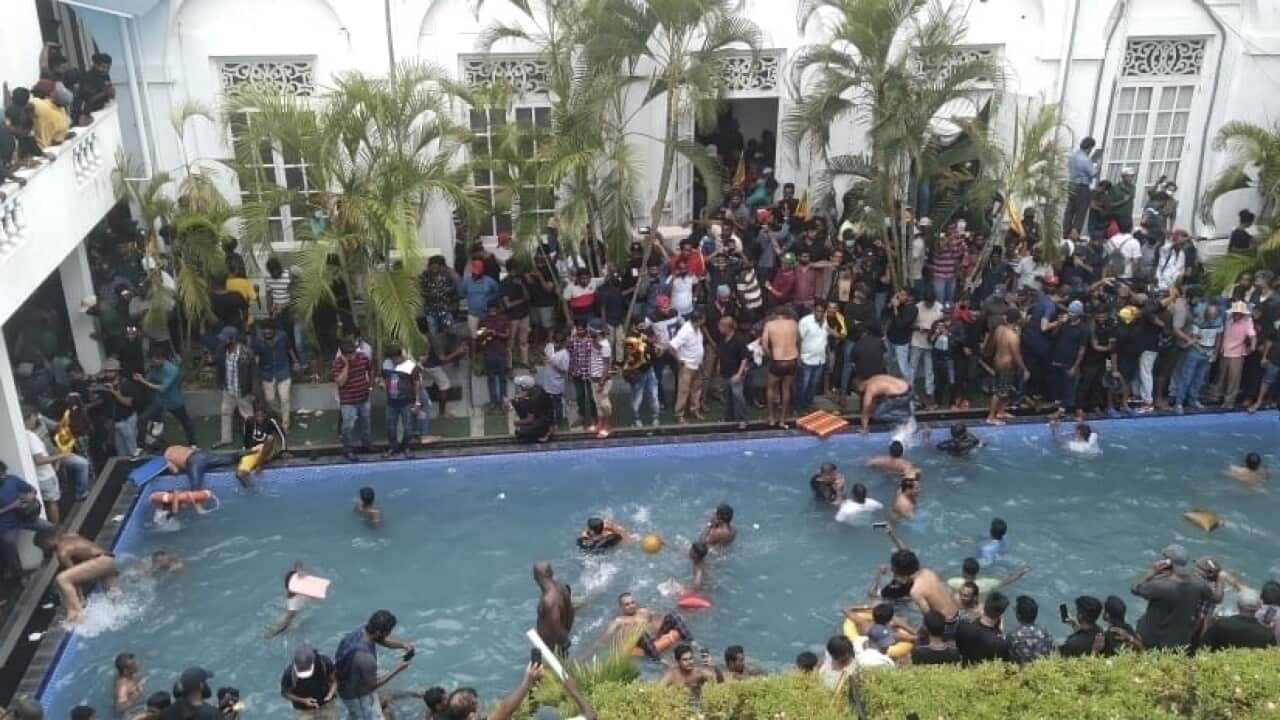Key Points
- Sri Lanka's opposition political parties are meeting to agree on a new government.
- It comes a day after the country's president and prime minister offered to resign.
Sri Lanka's opposition political parties are meeting to agree on a new government.
It comes a day after the country's president and prime minister offered to resign in the most dramatic day of months-long political turmoil.
Protesters stormed both leaders' homes and setting fire to one of the buildings in a rage over the economic crisis.
It was not clear if President Gotabaya Rajapaksa was at his residence at the time, and government spokesperson Mohan Samaranayake said he had no information about his movements.
Protesters remained in Mr Rajapaksa's home, his seaside office and the prime minister's residence, saying they will stay until they officially resign.
Soldiers were deployed around the city and Chief of Defense Staff Shavendra Silva called for public support to maintain law and order.
Opposition politician M. A. Sumanthiran said all opposition parties combined could easily muster the 113 members needed to show a majority in Parliament, at which point they will request Mr Rajapaksa to install the new government and then resign.
He said the parties hoped to reach consensus Sunday.
Prime Minister Ranil Wickremesinghe said he will leave office once a new government is in place, and hours later the speaker of Parliament said Mr Rajapaksa would step down Wednesday.
Pressure on both men had grown as the economic meltdown set off acute shortages of essential items, leaving people struggling to obtain food, fuel and other necessities.
If both president and prime minister resign, Speaker Mahinda Yapa Abeywardena will take over as temporary president, according to the constitution.
Mr Rajapaksa appointed Mr Wickremesinghe as prime minister in May in an effort to solve the shortages and start economic recovery.
Mr Wickremesinghe had been part of crucial talks with the International Monetary Fund for a bailout program and with the World Food Program to prepare for a predicted food crisis.
The government must submit a plan on debt sustainability to the IMF in August before reaching an agreement.
Analysts say it is doubtful any new leader could do more than Mr Wickremesinghe.
His government's efforts showed promise, with much-needed fertiliser being distributed to farmers for next season's cultivation and a first consignment of cooking gas orders arriving in the country Sunday.
"This kind of unrest could create confusion among international organisations like the IMF and the World Bank," political analyst Ranga Kalansooriya said, adding that a new administration should agree on a common program for economic recovery.
He said while Mr Wickremesinghe was working in the right direction, his administration's weakness was not implementing a long-term plan to go with its focus on solving day-to-day problems.
It is unlikely that an all-party government will agree on IMF-backed economic reforms without some parties losing their political support.
LISTEN TO

Leaders resign amid Sri Lanka's political drama
SBS News
03:47
Mr Wickremesinghe said Saturday that it was not proper for him to leave without a government in place.
"Today in this country we have a fuel crisis, a food shortage, we have the head of the World Food Program coming here and we have several matters to discuss with the IMF," Mr Wickremesinghe said.
"Therefore, if this government leaves there should be another government."
Thousands of protesters entered the capital Colombo on Saturday and swarmed into Mr Rajapaksa's fortified residence. Crowds of people splashed in the garden pool, lounged on beds and used their cellphone cameras to capture the moment.
Some made tea or used the gym while others issued statements from a conference room demanding that the president and prime minister go.

Chief of Defense Staff Shavendra Silva called for public support to maintain law and order after thousands of protesters entered the capital Colombo and swarmed into Mr Rajapaksa's fortified residence. Source: EPA / Chamila Karunarathne
Protesters later broke into the prime minister's private residence and set it on fire, Mr Wickremesinghe's office said. It wasn't clear if he was there when the incursion happened.
The country is relying on aid from India and other nations as leaders try to negotiate a bailout with the IMF.
Mr Wickremesinghe said recently that negotiations with the IMF were complex because Sri Lanka was now a bankrupt state.
Sri Lanka announced in April that it was suspending repayment of foreign loans due to a foreign currency shortage. Its total foreign debt amounts to $51 billion, of which it must repay $28 billion by the end of 2027.
Months of demonstrations have all but dismantled the Rajapaksa political dynasty, which has ruled Sri Lanka for most of the past two decades but is accused by protesters of mismanagement and corruption.
The president's older brother resigned as prime minister in May after violent protests saw him seek safety at a naval base. He later moved into a house in Colombo.



